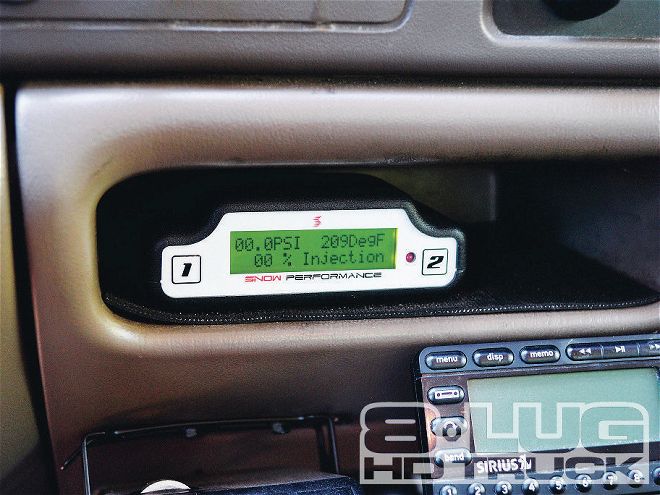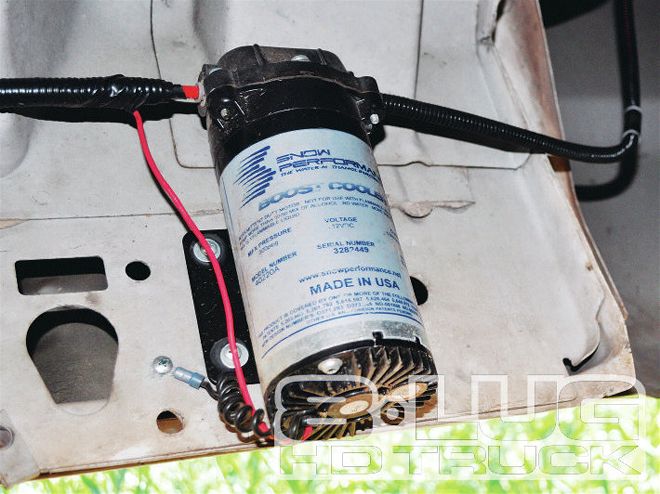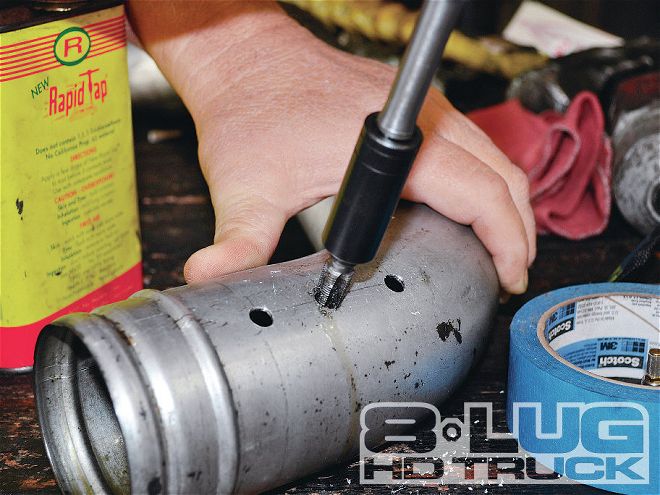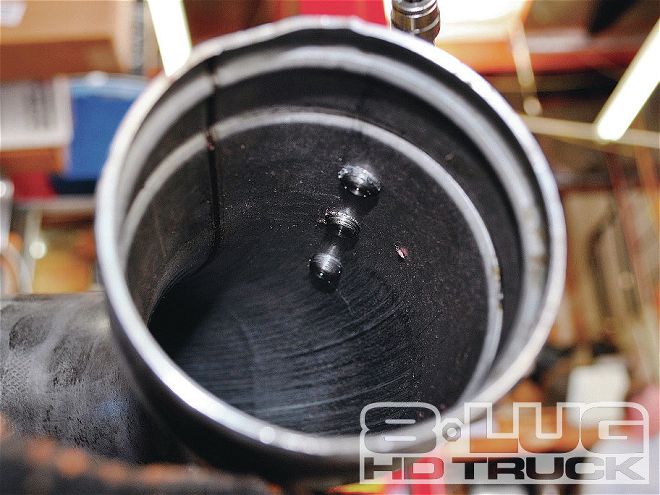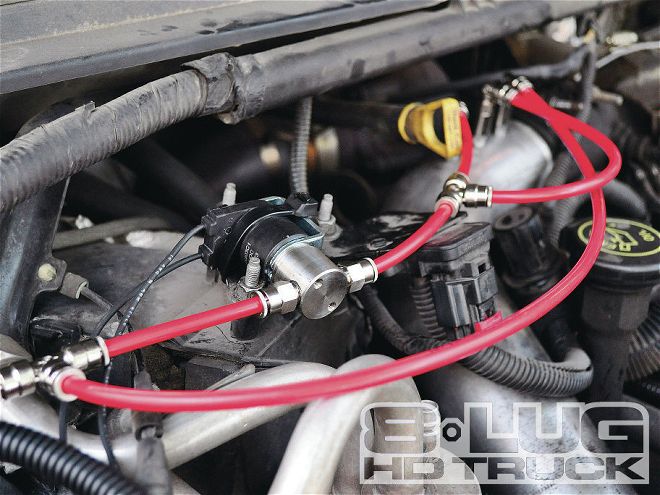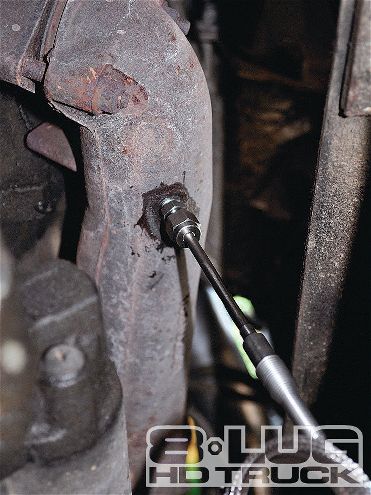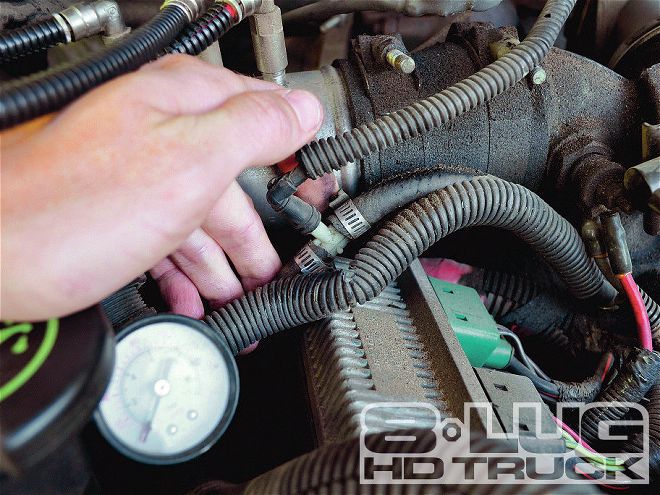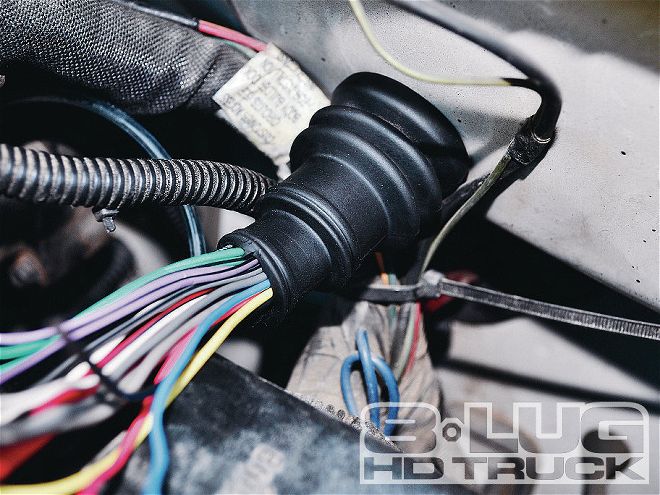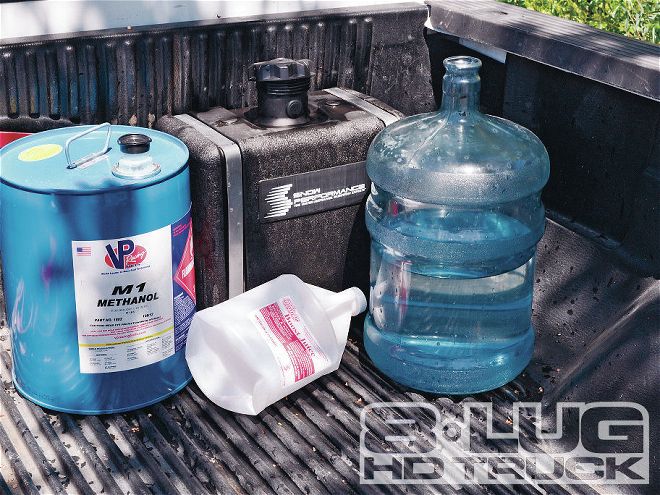Water-methanol injection has recently become a hot item in the racing and towing communities; its roots lie in pre-WWII fighter planes. The U.S. military began injecting a mix of water and methanol into the P-47 Thunderbolt’s engine, boosting horsepower numbers, in some cases close to 2,000 hp more than stock. This allowed for much shorter takeoffs and increased power for dogfights while enjoying better fuel economy at the same time.

| For our '01 Ford F-250, Matt Snow of Snow Performance recommended using the MPG-MAX kit since we would be using the 7.3L-equipped pickup. The kit consists of a 7-gallon tank, 2D digital controller, EGT sensor, and a 12-volt pump with all the hoses, nozzles, and hardware.
Using a 2D digital computer controller with multiple engine monitors, Snow Performance has taken this historically tested technology and adapted it to today’s modern engines for safe and reliable power. For serious load haulers, the Snow Performance kit makes rolling on ramps, climbing hills, and passing semis eons easier. Snow Performance claims (and we confirmed) there are gains of 1 to 3 mpg and about 20 percent horsepower, as well as an average 300-degree drop in exhaust gas temperature (EGT).
The Science
When injecting water-methanol into an internal-combustion engine, the mix creates what is known as a chemical intercooler. Depending on the powerplant, nozzles are installed in the intake and generally spray a 50/50 mix of water to methanol. The mist then enters the combustion chamber and instantly cools the incoming air. This creates a much denser air charge, allowing for a more complete burn, which equals more power. As a byproduct of this more complete burn, emissions are drastically reduced as well. Snow’s digital controller progressively injects this mix, giving you smooth, safe, green power.
Testing
After installing the MPG-MAX kit, we picked up our Carson Trailer, topped off the Snow Performance tank with a 50/50 mix of water-methanol, and filled up on diesel. Our testing plan was to start and stop at the same gas station, at the same time of day, with the intention of having the same ambient air temperature for each run. The route took us up and down 36 miles of 6 percent grades and ended with a 24-mile run through the city streets. We ran this loop four times to really give the MPG-MAX a true test. After making two “control” laps with the injection turned off, we were ready to start spraying the water-methanol.
The first time the pump kicked on was really an odd feeling. Starting at the base of the hill, we accelerated until the boost reached 8 psi. At that point, the Snow Performance controller turned on the first stage of injection. With the accelerator pedal in the same position, the truck climbed and climbed. It really does feel as if someone else is rolling on the throttle for you. EGT was drastically less, and we were able to maintain a higher, safer speed.
Testing Results: Hill Climbing
MPG-MAX turned off
EGT: 1,100-degree average
Sustained Speed: 45 mph
MPG: 10.11
MPG-MAX turned on
EGT: 900-degree average
Sustained Speed: 60 mph
MPG: 16.35
Note: These results were found while testing on an exceptionally mountainous highway. This is where the Snow Performance kit really excels. When testing on flat ground, the mpg gains were evident but much less substantial. On flat ground, we saw an average gain of 1.23 mpg over stock.
